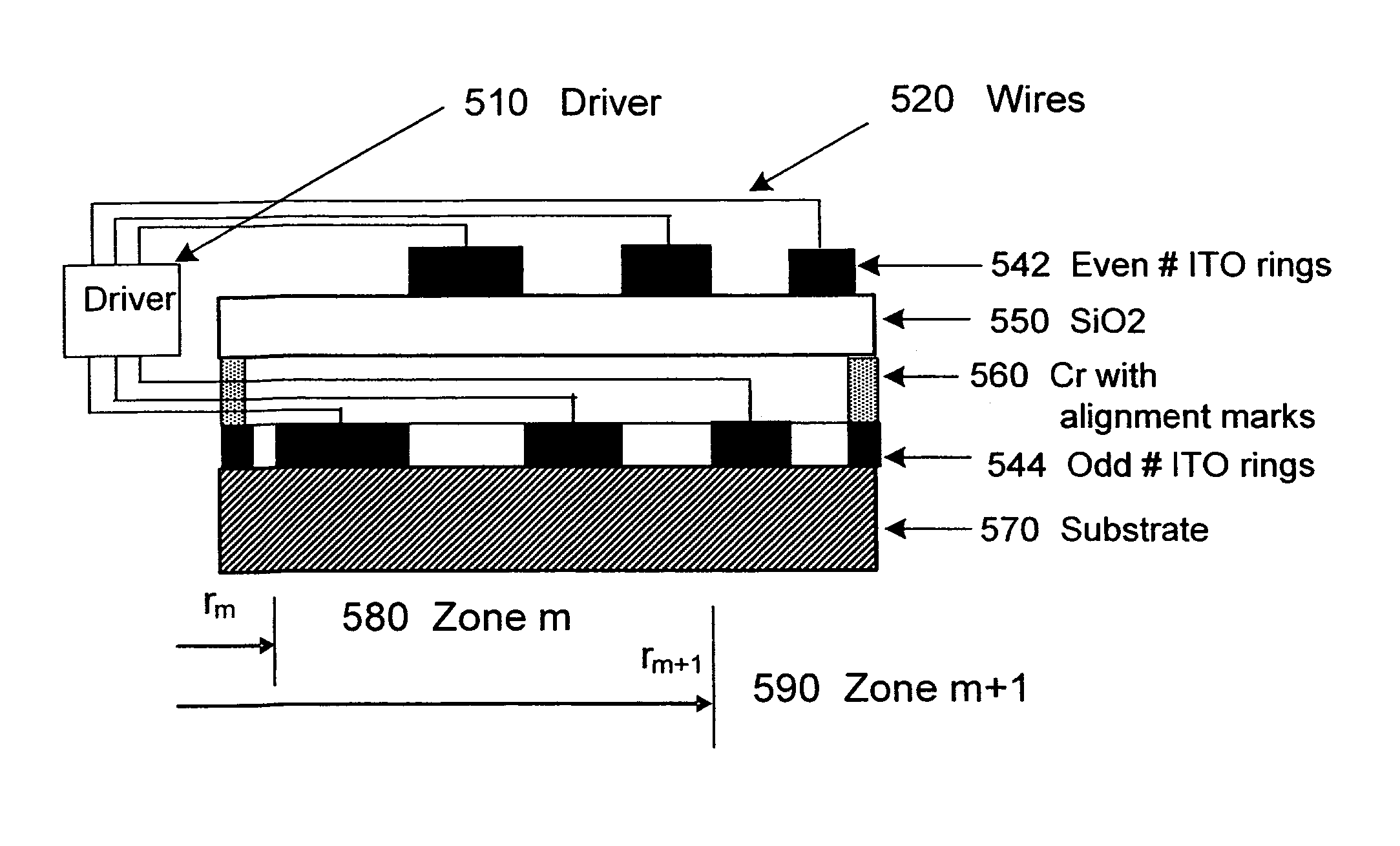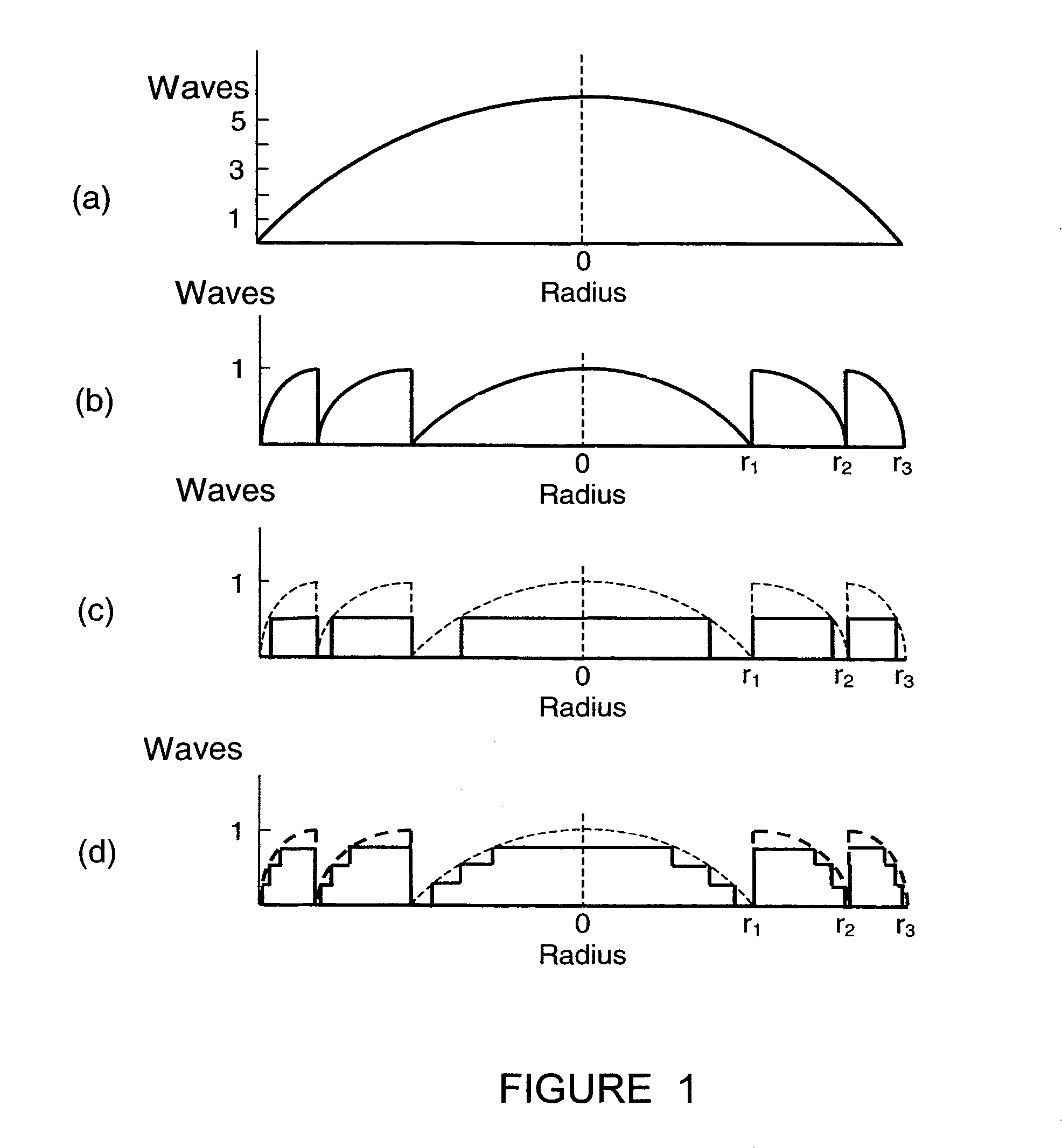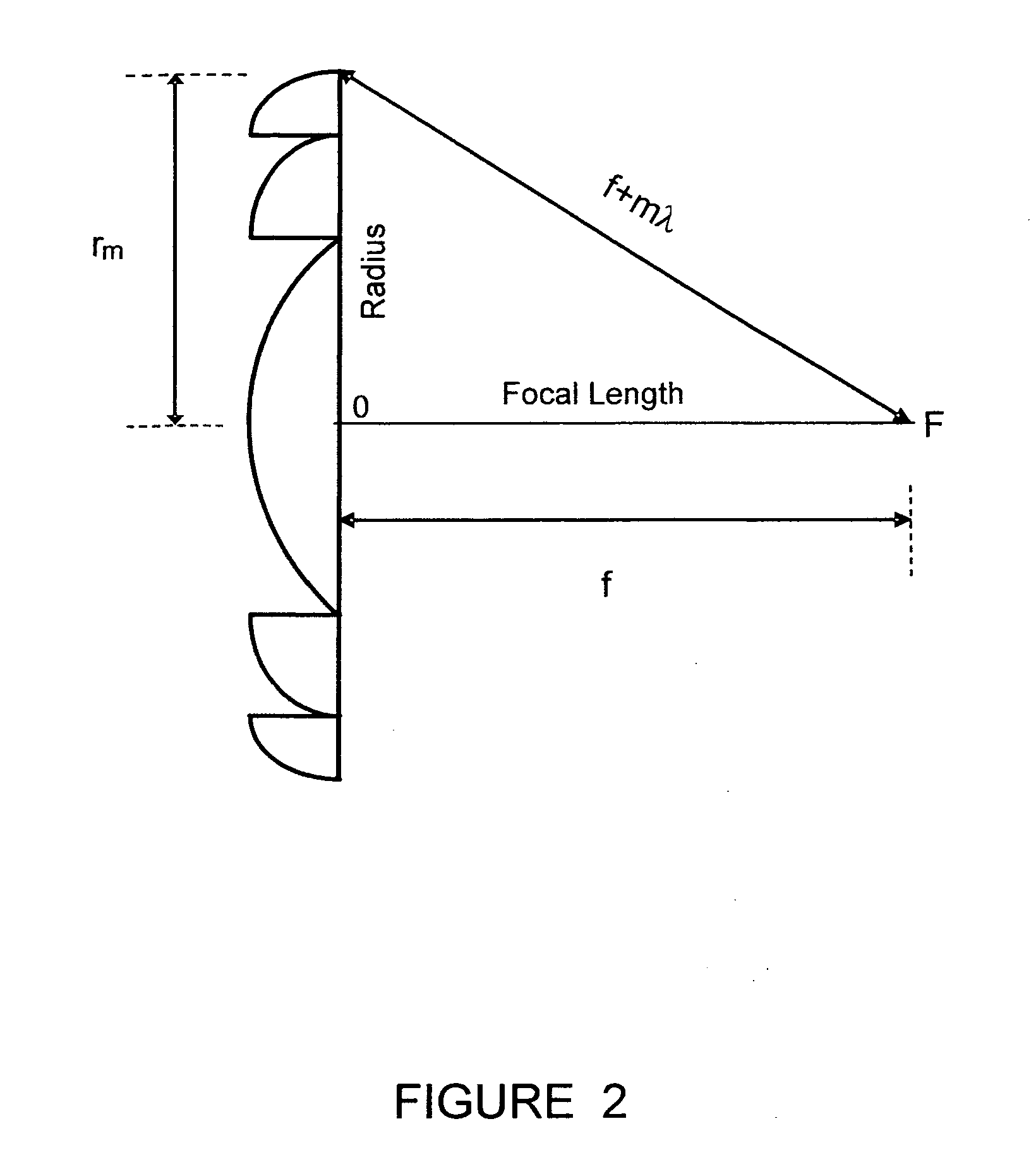Adaptive electro-active lens with variable focal length
a technology of electro-active lenses and focal lengths, applied in the field of adaptive electro-active lenses with variable focal lengths, can solve the problems of affecting the depth perception of binoculars, the bulky and costly of spectacles, and the inability of optical techniques to work well, so as to achieve the effect of adjusting the focusing power of lenses, compact design, and large apertures
- Summary
- Abstract
- Description
- Claims
- Application Information
AI Technical Summary
Benefits of technology
Problems solved by technology
Method used
Image
Examples
Embodiment Construction
[0027]For better understanding of the invention, basic concepts of liquid crystal cells, as well as some basic concepts in diffractive lenses and the principle of the adaptive lens are briefly reviewed here.
Diffractive Lenses
[0028]Diffractive lenses are known in the art. The function of a diffractive lens is based on near-field diffraction by a Fresnel zone pattern. Each point emerging from the structure serves as an emitter of a spherical wave. The optical field at a particular observing point is a summation of the contributions of the emitted spherical waves over the entire structure. Constructive interference of the spherical waves coming from the various points creates a high intensity at the observation point, corresponding to a high diffraction efficiency.
[0029]FIG. 1 shows an illustration of a diffractive lens: graph (a) is a conventional refractive lens; graph (b) is a diffractive lens with continuous quadratic blaze profile; graph (c) is a binary diffractive lens; and graph...
PUM
| Property | Measurement | Unit |
|---|---|---|
| thickness | aaaaa | aaaaa |
| thickness | aaaaa | aaaaa |
| distance | aaaaa | aaaaa |
Abstract
Description
Claims
Application Information
 Login to View More
Login to View More - R&D
- Intellectual Property
- Life Sciences
- Materials
- Tech Scout
- Unparalleled Data Quality
- Higher Quality Content
- 60% Fewer Hallucinations
Browse by: Latest US Patents, China's latest patents, Technical Efficacy Thesaurus, Application Domain, Technology Topic, Popular Technical Reports.
© 2025 PatSnap. All rights reserved.Legal|Privacy policy|Modern Slavery Act Transparency Statement|Sitemap|About US| Contact US: help@patsnap.com



